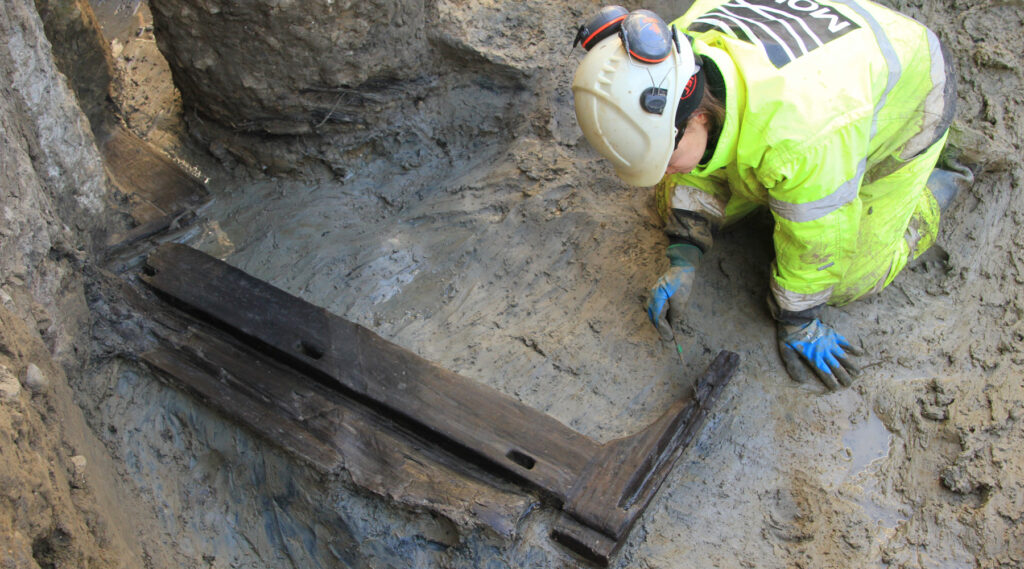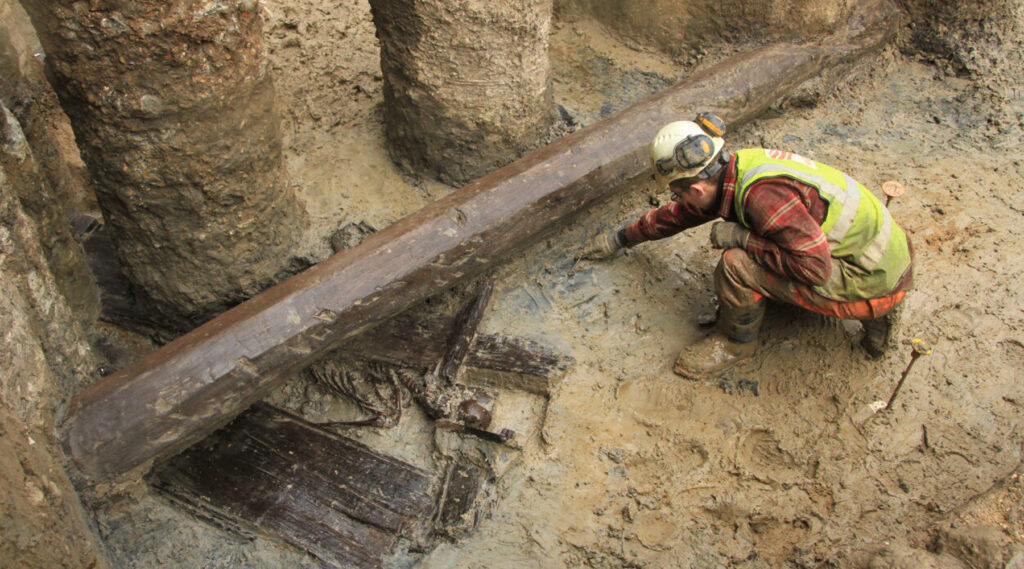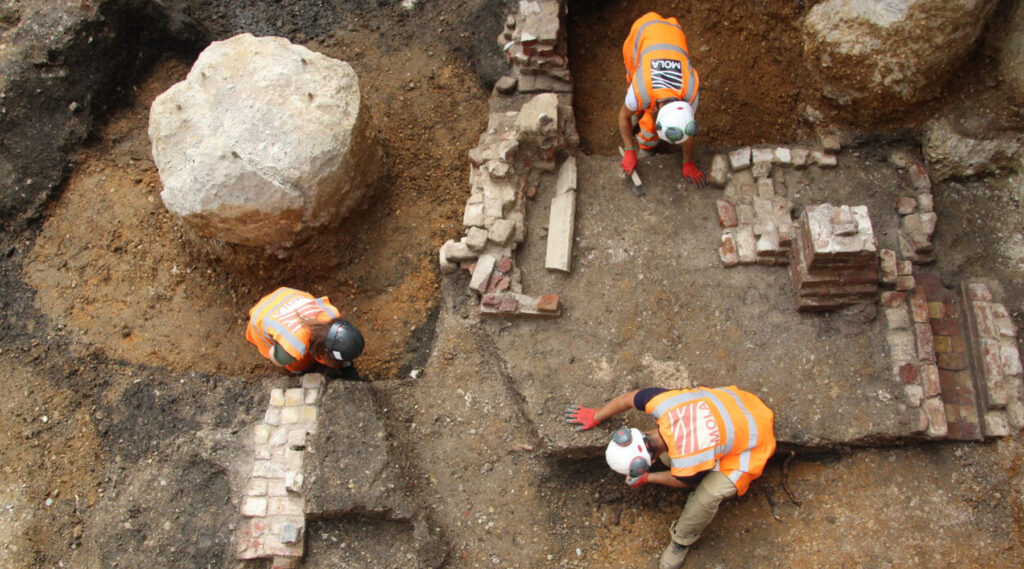An extraordinary discovery of Roman funeral remains has been uncovered in London, including possibly the first complete Roman funerary bed ever found in Britain.
The discovery came from archaeological excavations at a construction site next to the Holborn Viaduct in central London. Preserved by the damp mud from the River Fleet, the oak coffins, and funerary bed, dating back almost 2,000 years, are incredibly rare finds. To provide some context to the importance of the site, before this discovery, just three well-preserved Roman timber coffins had been discovered in Britain.
This site alone has added five more to the collection.
Excavations on the site have been taking place by MOLA (Museum of London Archaeology) ahead of the construction of an office scheme developed by Royal London Asset Management Property. Now six metres below modern street level, the team have uncovered the resting place of some of Roman London’s first residents.
As well as containing a Roman cemetery, the site included finds from medieval and later developments in London’s history, but it’s the Roman discoveries that have people particularly excited.
Heather Knight, Project Officer at MOLA explains: “We know the Romans buried their dead alongside roads, outside of urban centres. So, it was no great surprise to discover burials at this site, which during the Roman period would have been located 170m west of the city walls and next to the major Roman road of Watling Street. However, the levels of preservation we’ve encountered – and particularly uncovering such a vast array of wooden finds – has really blown us away.”
It’s not just the exceptional collection of wooden coffins that makes this an important discovery, but also the remains of what could be Britain’s first known funerary bed. Made from high-quality oak, the bed has carved feet, and joints fixed with small wooden pegs. It was dismantled prior to being placed within the grave but may have been used to carry the individual to the burial and was likely intended as a grave good for use in the afterlife.
Depictions of beds being used as part of funerals are common across the Roman world. However, the funerary bed found at this site is the first complete example ever discovered in Britain.
Alongside skeletal remains, archaeologists have found personal objects including beads, a glass vial, and a decorated lamp – which is thought to date to the very early Roman period in Britain c. AD 48-80. Other artefacts accompanying burials in the Roman cemetery include high-status jewellery with jet and amber beads.
These Roman finds are just the latest layer to be revealed in the site’s slice through London’s history. Archaeologists discovered chalk floors and timber-lined wells, thought to be the remains of a 13th century tannery. Further wooden finds included a large 15th- or 16th-century water-pipe, which appears to have originally been used to pump water on a ship.
Excavations have also revealed there was another cemetery on the site during the 16th century, thought to be related to nearby St Sepulchre’s church.
While the MOLA team are continuing their excavations through early 2024, post-excavation work is also beginning to conserve and analyse the finds from the site. These will reveal many new details about the people who lived, worked, and were buried here over the past 2,000 years.
It is intended to display some of the archaeological finds in the new office when it is completed in 2026, so there will be public access to see them.
Keith Miller, Head of Offices at Royal London Asset Management Property said: “Holborn Viaduct has always been an exciting project for us as we contribute to the regeneration of the area by developing a sustainable office building that significantly enhances the broader public realm. We did not expect a find on this scale or of this significance. Royal London is committed to celebrating the heritage of all our projects, and it is remarkable that MOLA have unearthed so many important artefacts, shedding light on the details of our predecessors’ lives.”










Leave a Reply